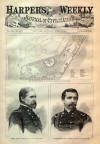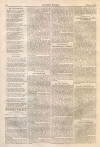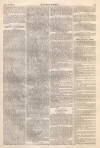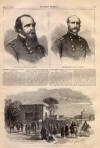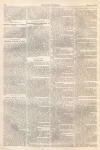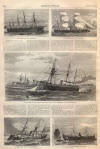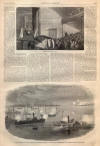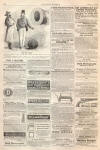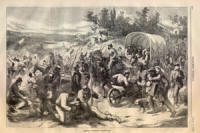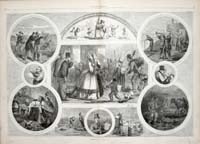Bombardment of Fort Powell
|
|
This Site:
|
HARPER'S WEEKLY. 221 GHOSTS ON THE STAGE.(Previous Page) we think that the fire which they delivered upon that mass of masonry would have sunk any European vessel which had received it. In some of the vessels now constructing, of which the Dunderberg may be taken as a type, there is a partial compromise between the two systems. She will have half a dozen of casemate guns, besides those in her turrets ; but still the American idea of diminished surface and fire concentrated in a few large pieces predominates. The great defects in our " Monitors" lie in their unseaworthiness, their want of speed, and in the uncertainty of the aim of their guns fired from turrets in motion. None of these defects seem to us irremediable. A turret with its two or four guns must be of less weight than an armament of forty guns, with its necessary ammunition. There can therefore be no insuperable obstacle in the way of placing a turret upon a seaworthy hull, and providing this with engines capable of giving full speed. The uncertainty of aim may be fully obviated by the automatic mode of sighting and discharge, as proposed by the inventor of the Revolving Turrets, which was fully explained in our Number of April 18, 1863. The European theory of iron-clads seems to have been practically carried to its ultimate point of perfection. Vessels have been constructed clad with 4 or 6 inches of iron, carrying 50 guns, fairly manageable, and apparently sea-worthy. That the British authorities are satisfied is shown by the construction of the Minotaur, the largest war vessel afloat, and one of three of the same class now building. The French Numancia, just launched, is of quite equal rate. The American theory yet awaits full practical development. Still we believe that we have in construction iron-clads which would be an over-match for any of those of France or England. The only point upon which we are doubtful is the essential one of speed. If the Dunderberg, for example, attains the speed anticipated for her, we are confident that, with her two turret, two pivot, and six broadside guns, she will be able to cope with any European antagonist. Three things are now required of an iron-clad: Speed, to find or elude an antagonist ; Force to assail ; and Strength to resist. We believe that the worst of our vessels combine more of these than the best of their European rivals. GHOSTS ON THE STAGE.THE "Ghosts" which have within a few weeks figured so largely in all the European and American theatres are produced in accordance with well-known optical laws, and by a very simple apparatus, although considerable dexterity and practice are required to make the whole work satisfactorily. Let any one in a dimly-lighted chamber stand in front of a large vertical pane of glass, like that which is often placed in the sliding-doors between the front and back parlors, and he will see his own image as though reflected in a mirror, only it will appear to be behind the glass. The reason is, that more light is reflected from the glass than passes through it. Now behind the glass let other per-, sons be placed, just as far behind it as the person whose image is to appear is in front, and the reflected figure will appear to be right among the real persons. Our illustration shows precisely how this law is made use of in producing "ghosts" on the stage. A plate of glass is placed at a proper inclination just back of the first trap," the cover of which is lowered. The stage being dimly lighted the transparent glass is wholly invisible to the spectator. In front of this, under the stage, and concealed from the sight of the spectators, is the actor whose ghost is to appear. A strong illumination is thrown upon her, usually by means of an electric light, and in obedience to the optical law which we have mentioned, her image appears upon the stage apparently among the real actors. To the eye of the spectator she is as real as any one of them. If the electric light is shut off, the image of course disappears at once ; if it is gradually lowered, the figure grows dimmer and appears to vanish slowly ; if the light is increased, the figure becomes more distinct, and appears to the spectator to advance toward him. This augmentation and diminution of light is best effected by a proper arrangement of movable screens to be interposed or removed as the action of the play requires the figure to advance, recede, or disappear altogether. The whole principle of the exhibition is simple enough ; but to make it " work" satisfactorily demands a vast deal of care and attention, and can be attained only by frequent and laborious rehearsals. This arises mainly from the fact that the spectral figure is not seen by the real actors on the stage, and yet they must " play to" it. They must kneel to it, cower before it, run from it, stab or shoot it, as the action of the play demands. The actors must, therefore, remember precisely where the spectre, invisible to them, appears to be to the eye of the spectators in front. The mistake of a moment in time may make the whole performance ridiculous. If every thing works well the illusion is complete. The senses of the spectator are completely cheated, even though he may know exactly how it is done. It would be well worth while to investigate how far the ghostly apparitions, which are recorded from the days of the Witch of Endor downward, have been produced by the thaumaturgists availing them-selves of one of' the most familiar laws in optics. FORT POWELL.WE give on this page a view, supplementary to our sketches of last week, of the attack upon FORT POWELL, at Grant's Pass, in Mobile Bay, by the mortar fleet under FARRAGUT, on the 24th of February last, as sketched during the engagement from the deck of' the flagship Calhoun. Fort POWELL is a sand battery commanding the Pass, which is a shallow strait connecting Mississippi Sound with Mobile Bay, along the northern side of Dauphin Island. The fort mounts eight or nine guns of various calibre, some of long range, and is so situated in relation to the shallow water that vessels of ordinary draught can not get within two and a half or three miles of it. The bombardment of the fort was under the personal supervision of Admiral, FARRAGUT who directed movements from the deck of the Calhoun, and was principally maintained by the mortar schooners, or "Bummers," as they are facetiously called by the marines. Four gun-boats were in the action, namely, the flag-ship Calhoun, Port Royal, Octorara, and the Jackson. The method of attack was to tow the schooners up through and into the mud, to a position as near to the fort as possible, and leave them to pound away as best they could, the gun-boats taking post near by to render assistance in case the mortars were disabled. After the bombardment was well opened the firing was vigorously sustained until it became apparent that the distance was too great to effect a reduction of the fort. The fleet accordingly hauled off to await reinforcements of light draught vessels from New Orleans. Of the shells thrown probably not more than a fifth part took effect ; and the rebels repaired at might what damage was done during the day. The casualties of' the fleet were unimportant. BOMBARDMENT OF FORT POWELL BY ADMIRAL FARRAGUT'S FLEET, ON FEBRUARY 24TH, 1864 -SKETCHED DURING THE ENGAGEMENTAPRIL 2, 1864.] 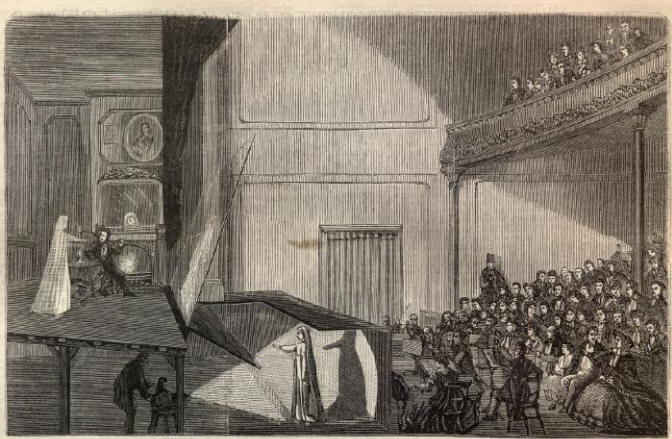 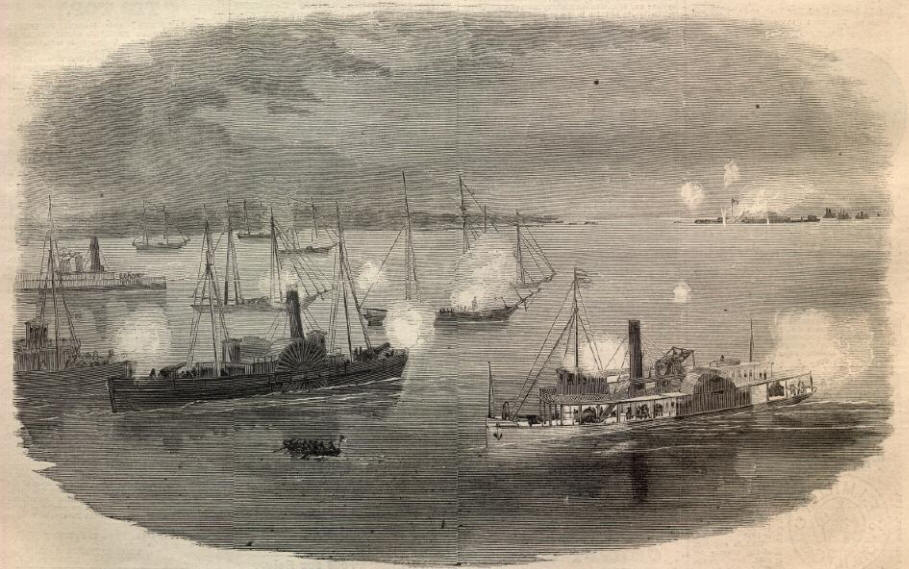 |
||||||||||||||||||||||
|
|
||
|
|
Site Copyright 2003-2018 Son of the South. For Questions or comments about this collection, contact paul@sonofthesouth.net |
|
|
Are you Scared and Confused? Read My Snake Story, a story of hope and encouragement, to help you face your fears. |
||
